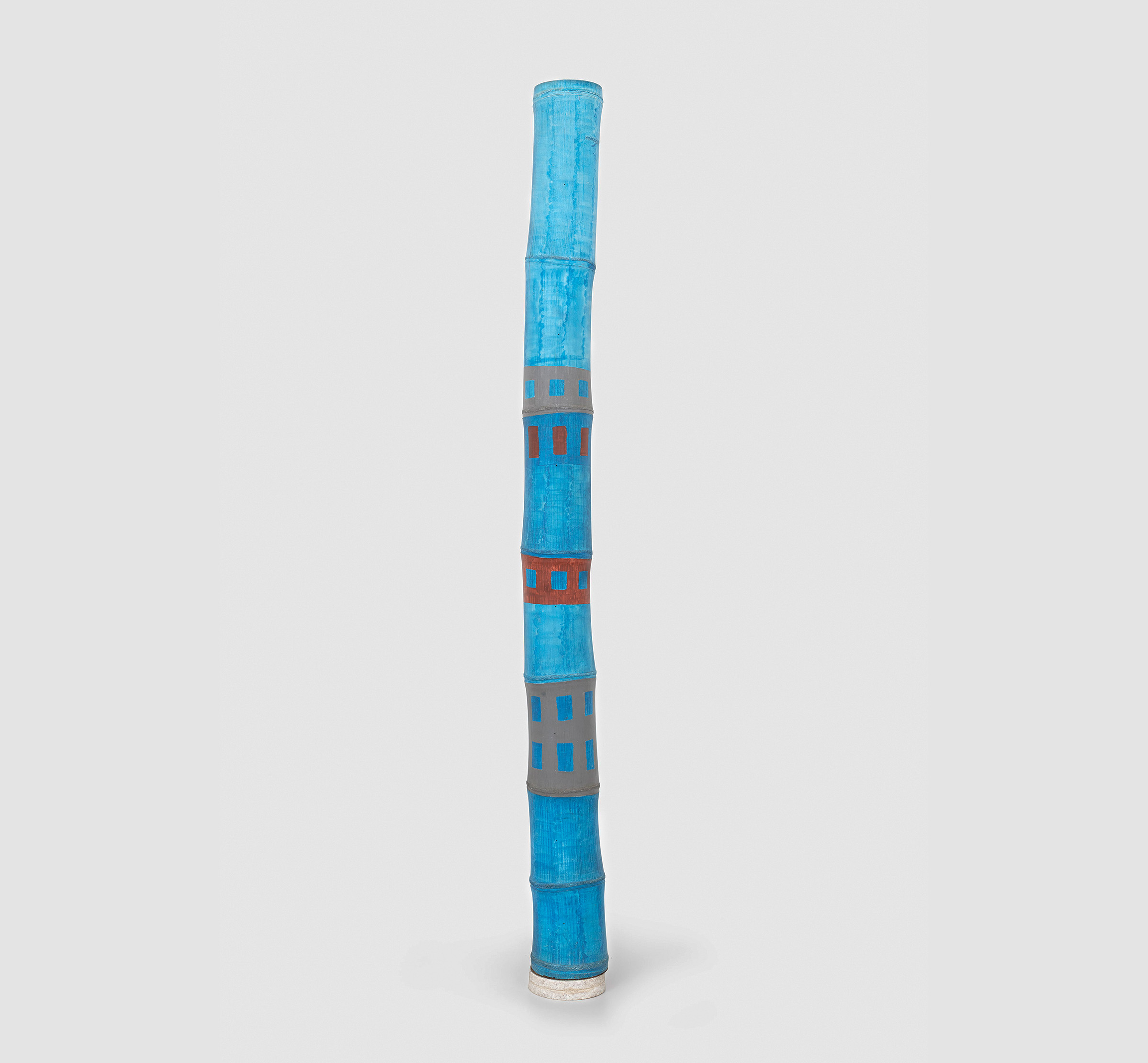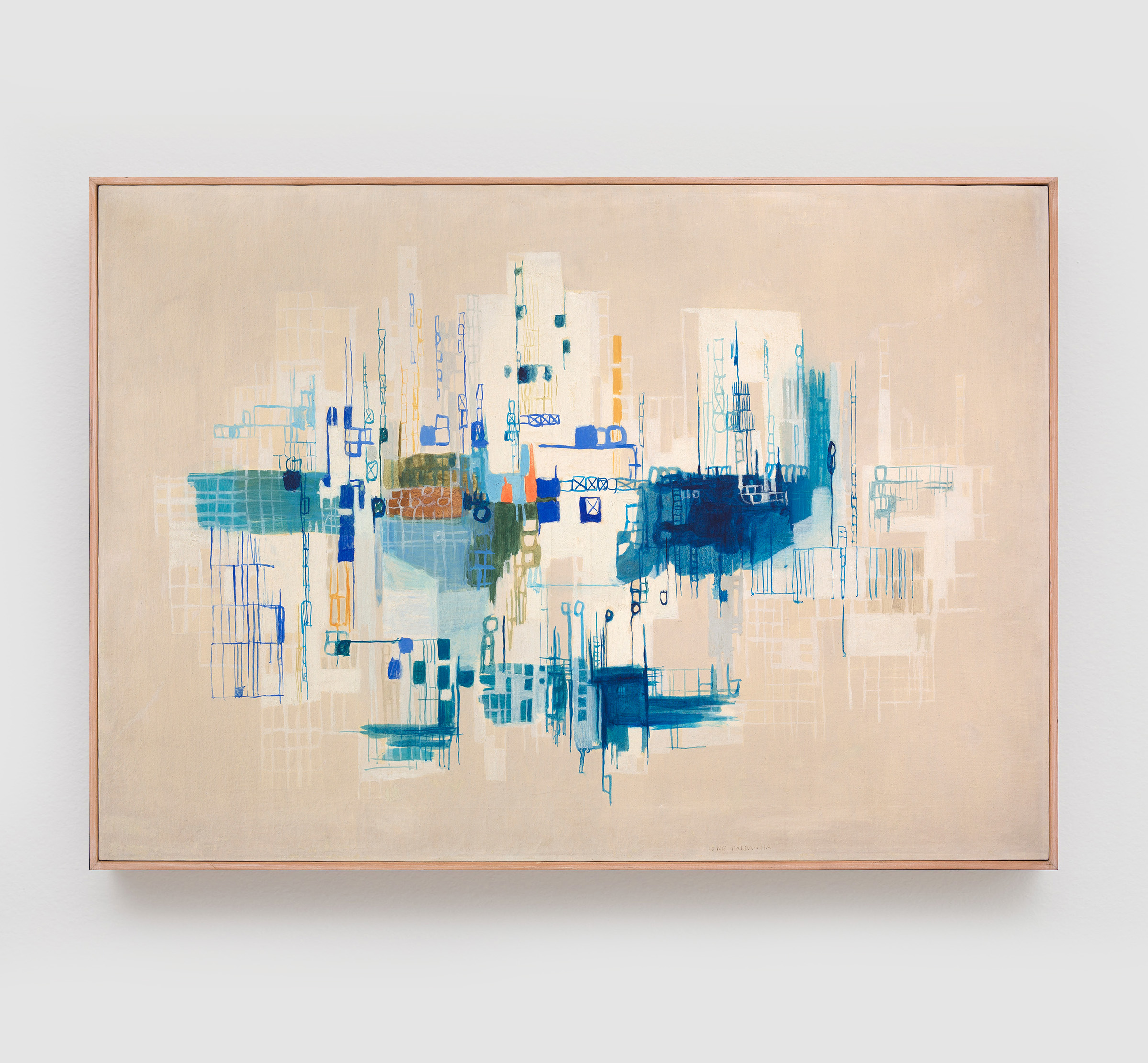Ione Saldanha
Born in 1919 in Alegrete, a city in Rio Grande do Sul, Ione Saldanha studied in Paris and Florence but settled in Rio de Janeiro. She began her artistic production in the 1950s, frequently depicting colonial houses during this period, showing little interest in the visuality of modern constructions that strongly influenced the artists of her generation.
Her focus on architecture gradually led her toward abstraction, as if the facades were transforming into geometric notations. However, Saldanha stood apart from the concrete and neoconcrete trends of the decade, following her own path without aligning herself with any group.
By the late 1960s, she expanded her field of experimentation by painting on materials such as wooden slats, spools (wooden reels for electrical cables), and bamboo, exploring chromatic compositions. It was as though her forms had leapt off the canvas to occupy real space – we could relate the verticality of the slats to that of buildings and geometric shapes in Saldanha's paintings. The bamboo, on the other hand, is like the slat rotating on its own axis, without a front or back, thus breaking away from the canvas. The elegant and sober compositions of this period contrast with the rusticity of the materials.
Participou de várias edições da Bienal Internacional de São Paulo; com prêmio aquisição em 1967; e sala especial em 1975 e 1979. No ano de sua morte foi realizada a retrospectiva Ione Saldanha e a Simplicidade da Cor no Museu de Arte Contemporânea de Niterói (MAC/Niterói).





